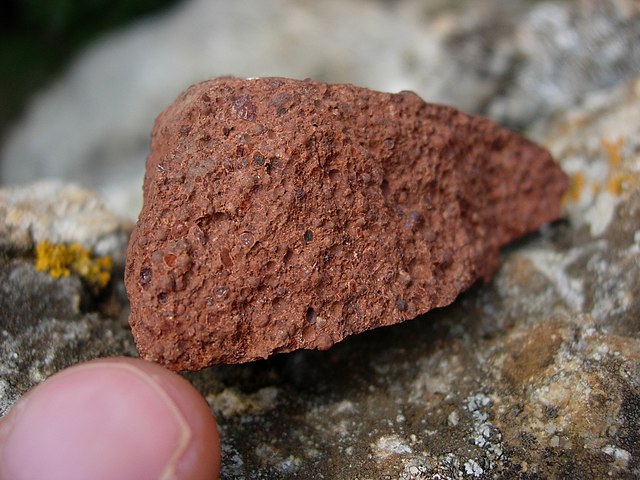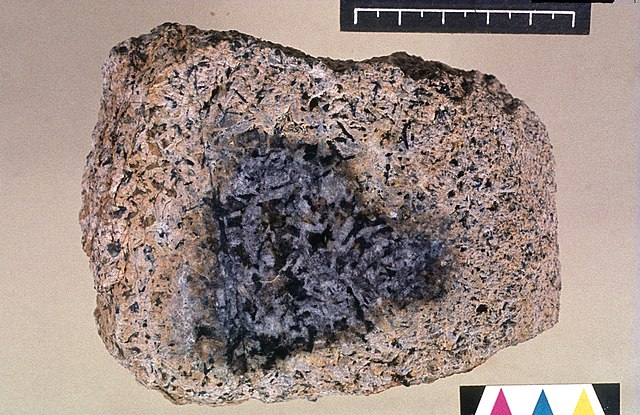Red mud, now more frequently termed bauxite residue, is an industrial waste generated during the processing of bauxite into alumina using the Bayer process. It is composed of various oxide compounds, including the iron oxides which give its red colour. Over 95% of the alumina produced globally is through the Bayer process; for every tonne of alumina produced, approximately 1 to 1.5 tonnes of red mud are also produced. Annual production of alumina in 2020 was over 133 million tonnes resulting in the generation of over 175 million tonnes of red mud.
Red mud near Stade (Germany)
Bauxite, an aluminium ore (Hérault department, France). The reddish colour is due to iron oxides that make up the main part of the red mud.
Bauxite is a sedimentary rock with a relatively high aluminium content. It is the world's main source of aluminium and gallium. Bauxite consists mostly of the aluminium minerals gibbsite, boehmite and diaspore, mixed with the two iron oxides goethite and haematite, the aluminium clay mineral kaolinite and small amounts of anatase and ilmenite .
Bauxite appears dull in luster and is reddish-brown, white, or tan.
Reddish-brown bauxite
Bauxite with US penny for comparison
Bauxite with core of unweathered rock
One of the world's largest bauxite mines in Weipa, in northern Queensland, Australia






